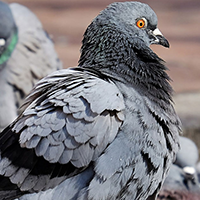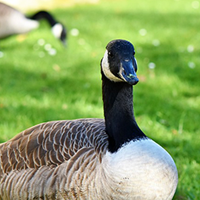Pigeons are known to be exceptional navigators, with the ability to find their way back to their home nesting area even when released from hundreds of kilometres away. Despite many years of research, the exact mechanisms behind this homing behaviour remain somewhat puzzling. However, scientists have found several factors that may play a role, including the use of pigeon pheromones.

Pheromones are chemical signals that are released by animals and insects to communicate with one another. Pigeons are known to produce pheromones that can influence the behaviour of other pigeons, including their homing behaviour. These pheromones are thought to be produced, in part, by the uropygial gland, a small gland located at the base of the tail. The gland secretes an oily substance that is spread over the bird's feathers during preening.
In the late 1960s, researchers began to investigate whether pigeon pheromones could be used to guide pigeons back to their home nesting areas. They discovered that by collecting the uropygial gland secretions from a group of birds and then applying the substance to the feathers of other pigeons, they could induce the birds to fly in the direction of the home nesting area. This effect was most pronounced when the birds were released from a location that was unfamiliar to them.
Since then, several studies have explored the role of pigeon pheromones in homing behaviour. One study found that when pigeons were exposed to the scent of their own loft (nesting area), it activated the same areas of the brain that are involved in navigation and spatial memory. Another study found that the pheromones produced by male and female pigeons differed, and that these differences could influence the birds' homing behaviour. It is also speculated that magnetics may a play a role, but scientists have been unable to prove or disprove this idea thus far.
Despite these findings, the exact mechanisms by which pigeon pheromones influence homing behaviour remain speculative. It is possible that the pheromones act as a kind of map, providing the birds with cues about the direction and distance to their home nesting area. Alternatively, the pheromones may act as a kind of compass, helping the birds to orient themselves in the correct direction. It is also possible that the pheromones simply act as a kind of signal, indicating to the birds that they are close to home. The earths magnetics may also play a role in this.
Pigeon pheromones appear to play a role in the homing behaviour of these birds. While the exact mechanisms by which they work are not fully understood, research has demonstrated that these chemical signals can influence the behaviour of other pigeons and activate areas of the brain involved in navigation and spatial memory. Further research is needed to fully understand the role of pigeon pheromones in homing behaviour and to explore their potential use in guiding pigeons and other animals in the future.
After years of study and our own trials, we have been able to fabricate our own unique blend of pheromones that makes us very successful in trapping pigeons. We use proprietary traps with pheremones, designed by and for Hawkeye. This makes Hawkeye your first choice in pigeon control.
Contact us today and take control of your pigeon problem!

















